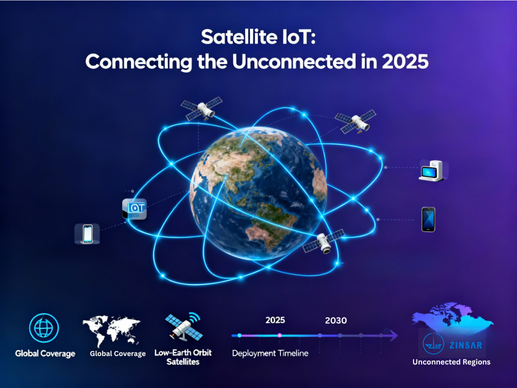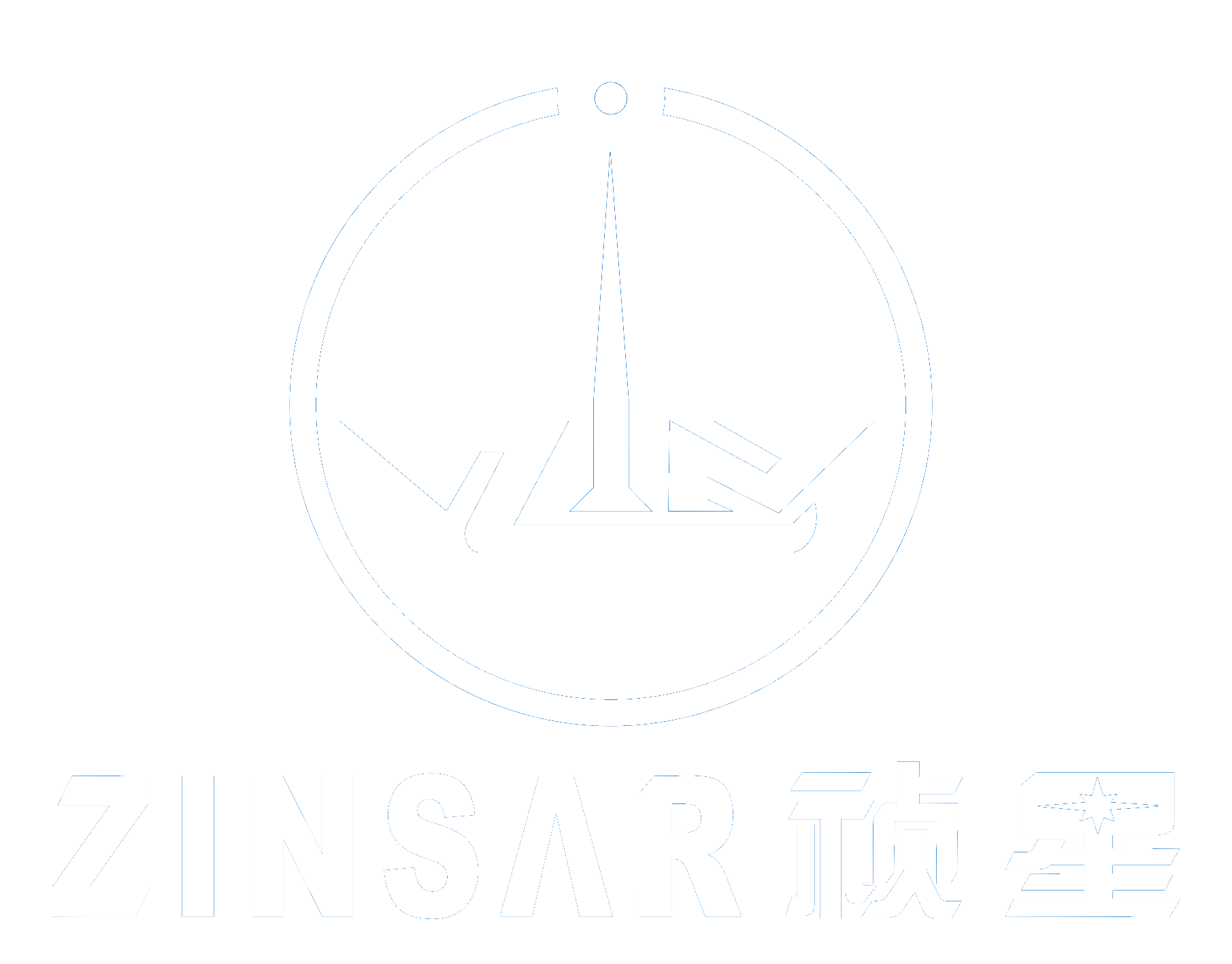
As industries expand globally into ever more remote and mobile environments, the role of satellite-based Internet of Things (IoT) connectivity is transitioning from niche to essential. For companies like ZINSAR Technology, this shift opens an immediate opportunity—especially when terrestrial networks cannot reach.
Market Outlook & Growth
Recent research indicates that the satelliteIoT market is poised for strong growth. According to an analysis by IoT Analytics, global satellite IoT connections reached approximately 7.5 million in 2024 and the combined connectivity and equipment market is forecast to grow at a 26 % CAGR to 2030, surpassing USD 4.7 billion. These data points underscore that satellite IoT remains in early stages—accounting for a small share of overall IoT connections—but with high growth potential ahead.
Key Drivers Enabling Expansion
Several major forces are reshaping the landscape:
- Hybrid & multi‐orbit network architectures: Operators are adopting LEO (Low Earth Orbit), MEO, and GEO orbits in tandem to improve latency, global coverage and cost-efficiency.
- Declining connectivity costs and equipment innovation: Advances in chipset design, standardized protocols (e.g., 3GPP Non-Terrestrial Networks) and economies of scale are making satellite IoT more accessible.
- New verticals demanding remote connectivity: Agriculture, maritime, mining, oil & gas, transportation and environmental monitoring are increasingly investing in IoT where terrestrial coverage is inadequate.
- Premium monetization models: Although connection volumes remain modest, average revenue per user (ARPU) for satellite IoT remains far higher than conventional cellular IoT—reflecting mission-critical and remote use-cases.
Implications for Telecom & Enterprise Operators
For telecom operators and enterprise network providers, this shift means satellite IoT is no longer “just a backup” but a strategic extension of connectivity. A few implications:
- Coverage extension: Integrating satellite IoT enables operators to serve remote or off-network assets—such as pipelines, vessels, remote sensors, or fleet vehicles—without relying on terrestrial infrastructure.
- Service diversification: By combining IoT hardware + network + platform, providers can move from voice/data to full solution bundles (hardware + connectivity + analytics).
- Timing & integration challenges: Operators must ensure that satellite-IoT deployments integrate seamlessly with existing network operations, including device management, data-flows and SLA expectations.
- Focus on reliability & lifecycle: For industries like maritime or mining, hardware must operate reliably for many years in harsh conditions—making rugged design, long battery life and global logistics essential.
Why ZINSAR Is Well-Positioned
As a startup founded in January 2025, ZINSAR brings both fresh ambition and specialized focus. Key strengths include:
- A clear positioning as a satellite IoT solutions provider—not just hardware reseller.
- Core offerings of hardware + platform + connectivity, targeted at industries like maritime, energy, transportation and mining.
-
Ability to serve as a partner for telecom operators looking to
extend into remote IoT territories, by providing integrated kits,
management platforms and satellite‐enabled solutions.
In short, ZINSAR can bridge the gap between “connectivity available” and “assets intelligently connected and managed”.
What to Watch in the Next 12–24 Months
- Standardisation momentum: Future rollout of 3GPP NTN standards will lower barriers and foster broader device-ecosystem compatibility.
- Hardware cost‐down and miniaturisation: As component costs fall, expect smaller, lower-power satellite IoT terminals suitable for new use-cases.
- Emergence of new business models: Data-as-a-service or sensor-as-a-service models may become more common, especially in agriculture and environment sectors.
- Telecom-satellite operator alliances: Partnerships between mobile operators and satellite IoT networks will accelerate—opening global roaming and integrated service offers.
Conclusion
While satellite IoT still represents a
relatively small portion of global IoT traffic today, the momentum is
unmistakable. For companies and operators who act now, the next 2-3 years will
likely be transformational.
For ZINSAR, this means: build on specialist hardware and platforms, align
closely with telecom partners, and deliver services tailored to remote,
mission-critical operations. In doing so, ZINSAR can help unlock and manage the
connectivity frontier.
ZINSAR – Connecting the world,
synchronizing the future.

